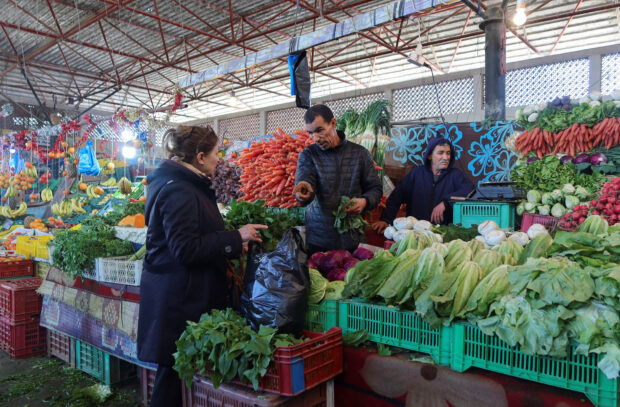Debt crunch looms for weaker economies with a wall of bond maturities ahead

Men reach out to buy subsidized flour sacks from a truck in Karachi, Pakistan Jan 10, 2023. REUTERS/Akhtar Soomro/ File photo
WASHINGTON -A combination of sticky high interest rates and lackluster global growth could push a number of emerging economies that are facing soaring refinancing needs into debt difficulties next year.
Many weaker economies navigated the fallout from the COVID-19 pandemic and the war in Ukraine with financing aid from multilateral and bilateral lenders.
But repayments on emerging markets’ high-yield international bonds will total $30 billion in 2024, a steep increase compared to the $8.4 billion left for the remainder of this year. This adds a layer of complexity to more vulnerable countries if some issuers can’t refinance their debt soon.
“A more prolonged period without market access would be of more concern for the lower-rated tiers of the emerging markets sovereign universe,” said James Wilson, EM sovereign strategist for ING.
How to mitigate the threat of severe debt distress for more vulnerable emerging economies will be a key topic in Washington, where policy makers and asset managers are meeting for the World Bank/IMF Spring Meetings this week.
Article continues after this advertisementTapping international debt markets hasn’t been a problem across the board for emerging economies. Sovereign issuance has hit a record high so far this year, although that bond sale bonanza has been driven by higher rated sovereigns.
Article continues after this advertisementMeanwhile countries such as Tunisia, Kenya and Pakistan “would need to find alternative sources of financing if the market doesn’t re-open for them,” said Thys Louw, portfolio manager for the emerging markets hard currency debt strategy at Ninety One, in London.

A woman shops at a vegetable and fruit market in Tunis, Tunisia Jan 28, 2023. REUTERS/Jihed Abidellaoui/File photo
Investors are concerned over refinancing risks for Kenya’s $2 billion bond maturing in June 2024, said Merveille Paja, EEMEA sovereign credit strategist for BofA.
“The market expects more solutions to be delivered, either the IMF’s resilience and sustainability trust or $1 billion external issuance or syndication loan,” Paja told Reuters.
The resilience and sustainability trust, approved a year ago, is a lending facility for climate and pandemic preparedness for low-income and some middle-income nations.
Tunisia’s debt crunch comes even earlier than Kenya’s: a 500 million euro overseas bond matures in October and another 850 million euros are due in February. Ratings agency Fitch sees a default as a “real possibility” for the CCC rated country.
The nation reached in October a staff-level agreement for a $1.9 billion bailout with the International Monetary Fund (IMF), though Tunisia’s President Kais Saied recently gave his clearest rejection yet of the terms of the stalled program.
Ethiopia, which is currently negotiating a financing program with the IMF, has a $1 billion eurobond issue coming due in 2024. Investors are already offering to extend maturities.
Sri Lanka, Zambia and Ghana have already defaulted on their overseas debt and are working towards debt reworks with creditors, albeit slowly.
Bahrain has limited reserves and large refinancing needs, but “strong support from peers such as Saudi Arabia mitigates some of this risk”, according to an ING report.
GLOBAL RISKS
“In Tunisia and Pakistan, the finalization of the IMF programme will be an important step to avoiding a default as that would unlock bilateral and multilateral financing,” added Louw.
Pakistan’s refinancing needs for 2024 stand at 12% of its international reserves.
The JPMorgan’s emerging markets bond index (EMBI) for high yield debt is at 900 basis points over U.S. Treasuries, and has largely remained over 800 bps since the beginning of last year.
“The spread movements during the pandemic were massive, but retreated very quickly. The Russia conflict and then the Fed hiking cycle led to higher spreads for a much longer period,” said Gregory Smith, emerging markets fund manager at London-based M&G Investment.
A weaker U.S. dollar should help countries to tap international markets in the medium term, but recent data fueled jitters that restrictive central bank policies could push the global economy into recession.
“Investors are concerned about further contagion of the banking sector and risks of the Fed pausing too early or tightening too aggressively,” said Paja from BofA.
RELATED STORIES:
https://business.inquirer.net/394886/developing-countries-facing-a-debt-crisis
https://business.inquirer.net/395233/the-credit-crunch-the-fed-fears-may-already-be-taking-shape